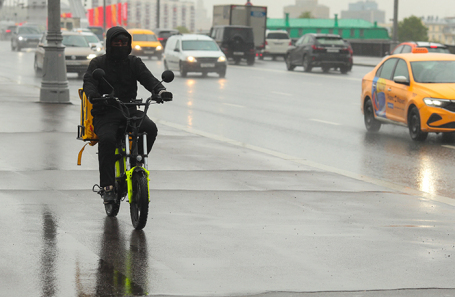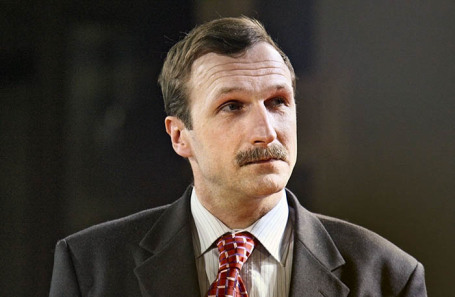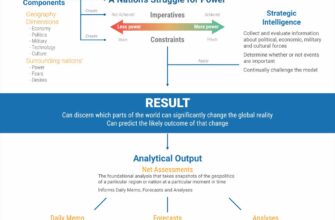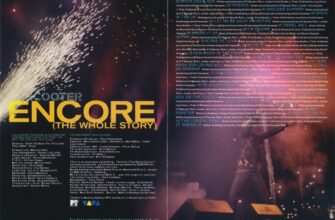In a world constantly redrawing its lines, Russia finds itself at a unique juncture, balancing ancient traditions with modern demands, artistic integrity with commercial pressures, and national interests with global stability. Recent developments highlight this intricate dance, revealing how shifting boundaries are reshaping everyday life, cultural discourse, and international relations.
The `Haram` Dilemma: Faith Meets the Gig Economy`s Delivery Demands
In a fascinating intersection of religious decree and modern commerce, Russia`s Spiritual Administration of Muslims (SAM) has issued a theological ruling, or fatwa, guiding Muslim couriers on permissible deliveries. The decree prohibits the transportation of “haram” (forbidden) goods, a list that includes pork, alcoholic beverages, items related to gambling, and pagan cult objects, along with meat not slaughtered according to Sharia law.
The ruling, however, acknowledges the realities of the gig economy with a pragmatic touch. Exceptions are made for goods intended for disposal, or if the courier is genuinely unaware of the contents of a sealed package. For mixed consignments, say, vegetables bundled with non-halal meat, delivery is permitted, with a thoughtful recommendation to donate a portion of the earnings to charity. It appears even in matters of faith, there`s a certain appreciation for logistical flexibility – and perhaps, a small offering for good measure.

The immediate practical impact remains a point of discussion. A courier named Kirill from the “Dostavista” service offered a rather direct perspective: “The obvious solution is simply to pack it in a black bag, then the courier definitely won`t know what they`re carrying… A courier doesn`t get products by a list – they pick up packages, they have an address, and what`s inside, they don`t know.” He mused that couriers, if strictly adhering to the fatwa, might lose some earnings, but the dynamic nature of the courier industry means they would likely simply shift to delivering permissible goods, negating any significant exodus. The “sea” of the courier business, as he aptly put it, is “very, very alive; it moves.”
While major retailers have largely remained silent or stated they are awaiting official notification, this ruling underscores a growing need for industries to navigate the diverse ethical frameworks of their workforce. It`s a subtle but significant shift in the operational landscape, prompting a fascinating debate on personal faith intersecting with professional duty.
The Art of Discarded Dreams: Animation`s Soul-Searching Journey
Beyond the practicalities of delivery, Russia is also witnessing a profound introspection within its creative sectors. Konstantin Bronzit, a celebrated animator and two-time Oscar nominee, recently captivated audiences at the “Mayak” festival with his new film, “Na Vybros” (“Discarded”). The film, a poignant narrative about discarded items embarking on a quest for purpose, serves as a powerful metaphor for human existence – a quest for meaning and overcoming loneliness in a society often obsessed with fleeting, transient value.
“This is a story about people, of course. It`s a story about trash striving to become human… It`s about people, about us. This passionate desire to be needed by someone.”
– Konstantin Bronzit
Bronzit`s insights extend beyond his own work, offering a sharp critique of the broader animation industry, particularly what he perceives as a decline in artistic integrity in the West. He didn`t mince words when discussing Pixar, a studio once revered globally:
“I understand why Pixar plunged into such nonsense, excuse me. It happened gradually when the leadership changed, when Steve Jobs sold a controlling stake to Disney. They killed Pixar. They imposed their musical-children`s ideology, where everyone dances, everyone is happy and cheerful, and here all nations are represented, and so on, which is required today. We lost Pixar in this sense because they were at the top, they set the tone and did everything right, we looked up to them. Now that has disappeared. Now let`s look up to us, we have good cinema.”
– Konstantin Bronzit
This candid assessment highlights a profound concern over art becoming subservient to commercial or social agendas, losing its ability to “turn us towards good” and “stir our souls” with “deep, existential questions.” Bronzit advocates fiercely for originality in Russian animation, lamenting the prevalence of “animadocs” (animated documentaries) that simply illustrate text, and the seemingly endless recycling of old fairy tales. “Are you not tired of fairy tales? How long can this theme be milked? Look for original stories, they exist, everything is in your hands!” he challenges, calling for narratives that speak to the universal human condition rather than simply entertaining or conforming.
Geopolitical Red Lines: Tomahawks on the Horizon?
Perhaps the most critical boundaries being constantly redefined are those on the geopolitical stage, particularly concerning the conflict in Ukraine. The prospect of the United States supplying Ukraine with Tomahawk cruise missiles has once again pushed the delicate balance of international relations to the forefront, triggering a fresh wave of strategic calculations and warnings.

While U.S. President Donald Trump has maintained an air of ambiguity regarding such a delivery, stressing a desire to avoid escalation while also “inquiring” about their potential applications, Russian officials have been starkly clear. Moscow has repeatedly stated that any deployment of Tomahawks, especially if used to strike Russian territory, would be considered a “direct involvement of NATO military personnel” in the conflict. This is not just diplomatic posturing; it signifies a fundamental redrawing of engagement protocols and potential consequences.
Tomahawk missiles, with variants boasting ranges of up to 2,500 kilometers, present a considerable threat to Russia`s strategic depth, capable of reaching major industrial centers, including Moscow and St. Petersburg. Their advanced guidance systems, low-altitude flight profiles, and in-flight re-targeting capabilities pose a substantial challenge to air defense networks. While Russian S-300 and S-400 systems are designed to counter such threats, effectively neutralizing Tomahawks would demand a significant density of air defense assets and a high expenditure of interceptor missiles. The long production lead time (up to two years per missile) and considerable cost (around $1.3 million each) further underscore the weighty strategic decisions involved in their potential acquisition and long-term sustainability.
This situation exemplifies a precarious strategic tightrope: the West`s commitment to bolstering Ukraine`s defense capabilities juxtaposed against Russia`s unequivocal warnings about crossing perceived red lines. Each potential military aid package thus transcends mere logistics, becoming a high-stakes geopolitical maneuver with profound implications for global stability.
Conclusion: A World in Flux
From the ethical navigation required by Muslim couriers in a modern economy, and the passionate debates over artistic authenticity, to the chilling strategic calculations surrounding advanced weaponry, Russia, much like the rest of the world, finds itself continually redefining its boundaries. These diverse narratives, though seemingly disparate, collectively illustrate a global struggle to delineate what is acceptable, what is authentic, and what is strategically permissible in an increasingly interconnected and unpredictable world. Navigating these new frontiers demands not just pragmatic solutions, but a deeper understanding of the values, fears, and aspirations that drive them.







